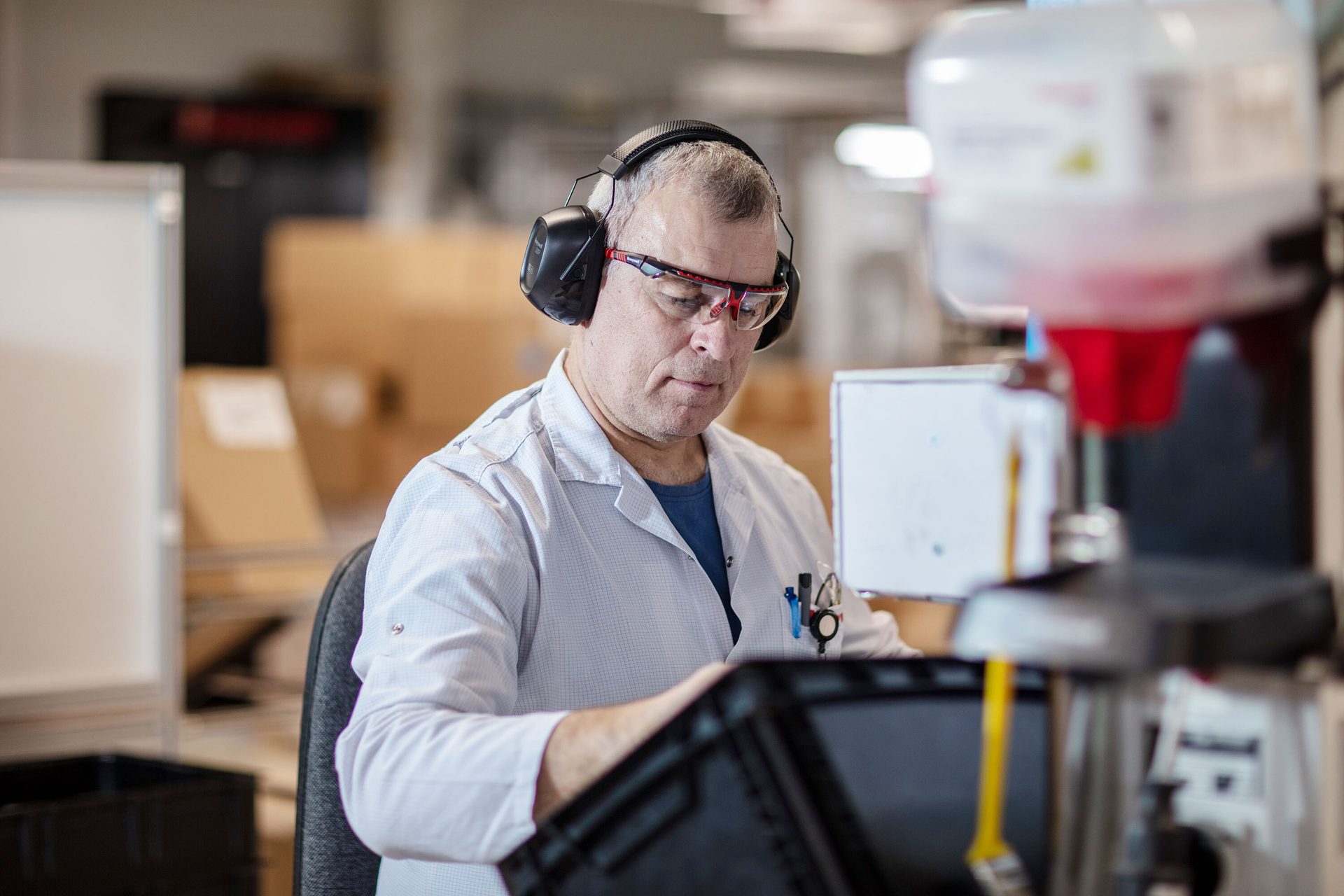digital world
Safety culture

Photo: Goodboy Picture Company / E+ via Getty Images.
Workplace safety in a
New ‘tools’ and wearable tech changing processes for the better
By Tito Warren
T
oday, employee wellness and safety remain a top priority for corporations, and having a first-in-class safety program put in place is not just a nice-to-have, it’s essential. As digital capabilities continue to evolve, modernizing ineffective, slow and expensive processes with renewed tools is one way to invest in industrial safety professionals and improve workplace safety.
Below, we’ll identify various avenues to advance safety procedures with the latest digital tools — from administrative to the jobsite — to further ensure a better-connected workplace.
Upgrade safety administrative programs
From compliance to risk assessment and mitigation, employee safety programs focus on a variety of factors. Too often administrative components associated with these programs are repetitive, require manual entry and are prone to many inaccuracies. In a modernized digital world, these processes are outdated and unproductive for achieving forward-thinking, quick assessments to support safety for employees.
However, the good news is that these administrative responsibilities can be streamlined through digital tools, providing organizations with fast and accurate data to improve safety prevention. For example, consider investing in software to assist you with OSHA record keeping. Software exists to log incidents, set corrective actions and due dates. These solutions enable full transparency into incidents and hold workers accountable for training.
Additionally, companies are utilizing digital management solutions for PPE programs to enhance employee safety while efficiently handling tasks. With these digital management tools, you can seek out a PPE partner to not only lead you through the outfitting process, but also help you identify your organization’s needs and guide you through building tailored programs to ensure PPE is suitable for your jobsites.
Companies are utilizing digital management solutions for PPE programs to enhance employee safety while efficiently handling tasks.
Before selecting a PPE partner to enhance your digital capabilities, there are important factors that should not be overlooked, including:
The latest data: In order to speed up processes, partners should offer real-time data around safety compliance and employee eligibility, such as digital records of purchases made by employees.
Streamlined processes: An efficient management tool saves time for administrators without making tasks more complicated or challenging. If you can simplify the process of outfitting employees through a digital program, this can remove the step of manual verification and therefore save the company inventory carrying costs.
Customization: An essential feature to allow for optimal flexibility for your organization, along with being able to facilitate product selection to guarantee compliant items are used. Digital portals for organizing, choosing, and customizing safety gear lead to advancing safety.
Availability and convenience: A provider should be accessible and be ready to complete orders for all your employees regardless of where they are. For instance, organizations are offering online vouchers for employees to easily redeem PPE. A partner should have a variety of locations – including mobile stores, and online ordering – warranting that PPE gear and services are always available.
Advance to augmented reality training sites
Another digital phenomenon that continues to increase in popularity is augmented reality (AR), specifically for jobsite training purposes. AR can replace traditional methods and interconnect a virtual reality with real-life visuals — easily replicating training scenarios and processes in less time while saving on expenses.
For example, overlaying digital content onto real jobsites enables employees to intermingle with environments and gives contextual details about their workspace via smartphones or AR headsets. This creates an interactive experience and allows employees to learn safety procedures for potential situations — excluding the danger factor that would be present with on-the-job training. It also provides a more engaging experience for employees to get comfortable with processes versus just reading text-heavy manuals.
Technology as a uniform
Across many industries, wearing technology is on the rise — providing a variety of new safety measures. From glasses with heads-up displays and 5G-connected hardhats, to PPE with embedded sensors that monitor health stats such as heart rate or jobsite data like environmental hazards, PPE has become more digitized and innovative, and you can now work harder and provide more for your employees.
Wearable technology gives both safety professionals and employees a wide-ranging look into the potentially serious injury and fatality situations on a jobsite. These digital devices can modernize on-site job monitoring, provide proactive risk management, and increase productivity for both you and your employees. Data from wearable technology can be saved and analyzed to support future efforts for improvement across safety processes and inform you of unforeseeable issues.
Tito Warren is the president of Global Industrial Sales and Operations at Red Wing Shoe Company. He oversees the Red Wing For Business global industrial programs.

